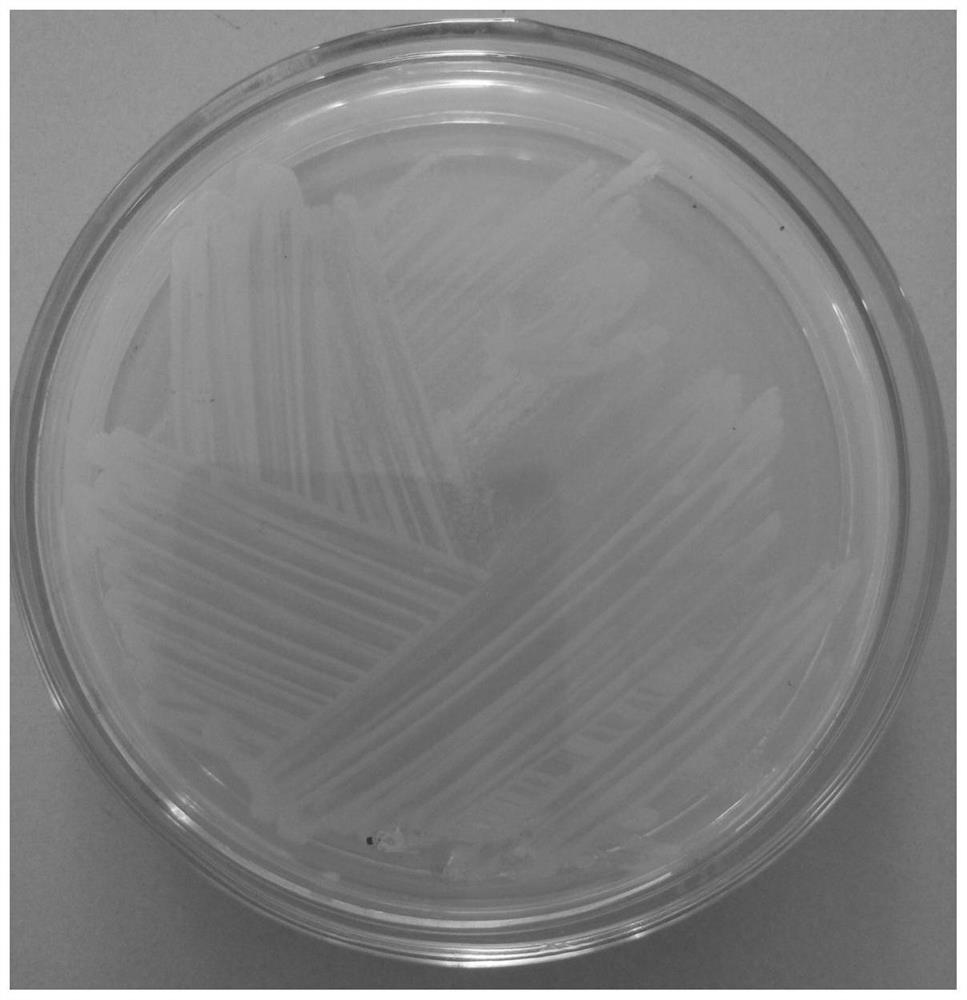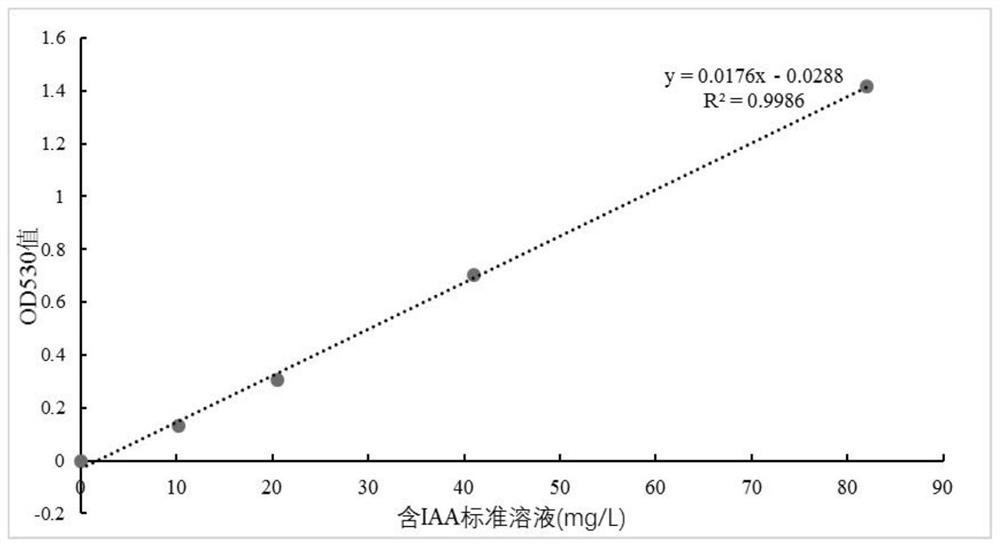A kind of saline-alkali-resistant bacterial strain kj-1 producing indole acetic acid and its application
A technology of indole acetic acid and KJ-1, applied in the field of agricultural microorganisms, can solve the problems of crop nutrition disorder, root hair cell dehydration, withering, etc., achieve high salt-alkali tolerance, promote seed germination and crop growth, and adapt to temperature range wide effect
- Summary
- Abstract
- Description
- Claims
- Application Information
AI Technical Summary
Problems solved by technology
Method used
Image
Examples
Embodiment 1
[0028] Example 1 Isolation and identification of saline-alkali-tolerant indoleacetic acid-producing strain KJ-1 and strain KC-1
[0029] Soil was collected from saline-alkali land in Xinjiang, packed into clean sampling bags, marked, and stored in a 4°C refrigerator for later use.
[0030] Weigh 10 g of the collected soil sample and place it in a 250 mL conical flask containing 90 mL of sterilized water. After shaking at 150 r / min for 20 min on a shaker, use a 1 mL pipette to draw 1 mL from the supernatant and add it to a 9 mL of sterile water. Mix well in the test tube of bacterial water, then use a pipette to draw 1 mL from this test tube and add it to another test tube containing 9 mL of sterile water, mix well, and so on to make 10. -1 , 10 -2 , 10 -3 , 10 -4 , 10 -5 , 10 -6 After different dilutions of the solutions, draw 0.1 mL of each and spread them evenly on the LB medium plate containing 10% sodium chloride, invert them in a 30°C incubator for 2-3 days, and pick...
Embodiment 2
[0035] Example 2 Study on growth characteristics of strains KJ-1 and KC-1
[0036] 1. Effects of different pH on the growth of strains KJ-1 and KC-1
[0037] The bacterial suspensions of strains KJ-1 and KC-1 were inoculated into LB medium with different pH values (6, 7, 8, 9, 10, 11) with 1.0% inoculum respectively, and were shaken at 30 ° C and cultured at 150 r / min for 24 h. , with the LB medium without inoculation as the control, the optical density value (D600nm) was detected by 722 spectrophotometer. The results are shown in Tables 1 and 2. The alkali resistance of KJ-1 is better than that of KC-1.
[0038] Table 1 Effects of different pH on the growth of strain KJ-1
[0039]
[0040] Table 2 Effects of different pH on the growth of strain KC-1
[0041]
[0042]
[0043] 2. Effects of different temperatures on the growth of strains KJ-1 and KC-1
[0044] The bacterial suspensions of strains KJ-1 and KC-1 were inoculated in LB medium with a pH value of 9 wit...
Embodiment 3
[0056] Example 3 Qualitative determination of nitrogen fixation of strains KJ-1 and KC-1
[0057] The strains were streaked in Ashbei medium, cultured at 30°C for 7 days, and the qualitative determination of nitrogen fixation was carried out.
[0058] Ashwagandha medium: mannitol 10.0g, KH 2 PO 4 0.2g, MgSO 4·7H 2 O 0.2g, NaCl 0.2g, CaCO 3 5.0g, CaSO 4 ·2H 2 O 0.1 g, agar 20 g, deionized water 1 000 mL, sterilized at 121 °C for 20 minutes.
[0059] It was determined that the strain KJ-1 could grow in this medium, indicating that the strain had nitrogen fixation ability.
[0060] It was determined that the strain KC-1 could not grow in this medium, and the strain had no nitrogen-fixing ability.
PUM
 Login to View More
Login to View More Abstract
Description
Claims
Application Information
 Login to View More
Login to View More - R&D
- Intellectual Property
- Life Sciences
- Materials
- Tech Scout
- Unparalleled Data Quality
- Higher Quality Content
- 60% Fewer Hallucinations
Browse by: Latest US Patents, China's latest patents, Technical Efficacy Thesaurus, Application Domain, Technology Topic, Popular Technical Reports.
© 2025 PatSnap. All rights reserved.Legal|Privacy policy|Modern Slavery Act Transparency Statement|Sitemap|About US| Contact US: help@patsnap.com



